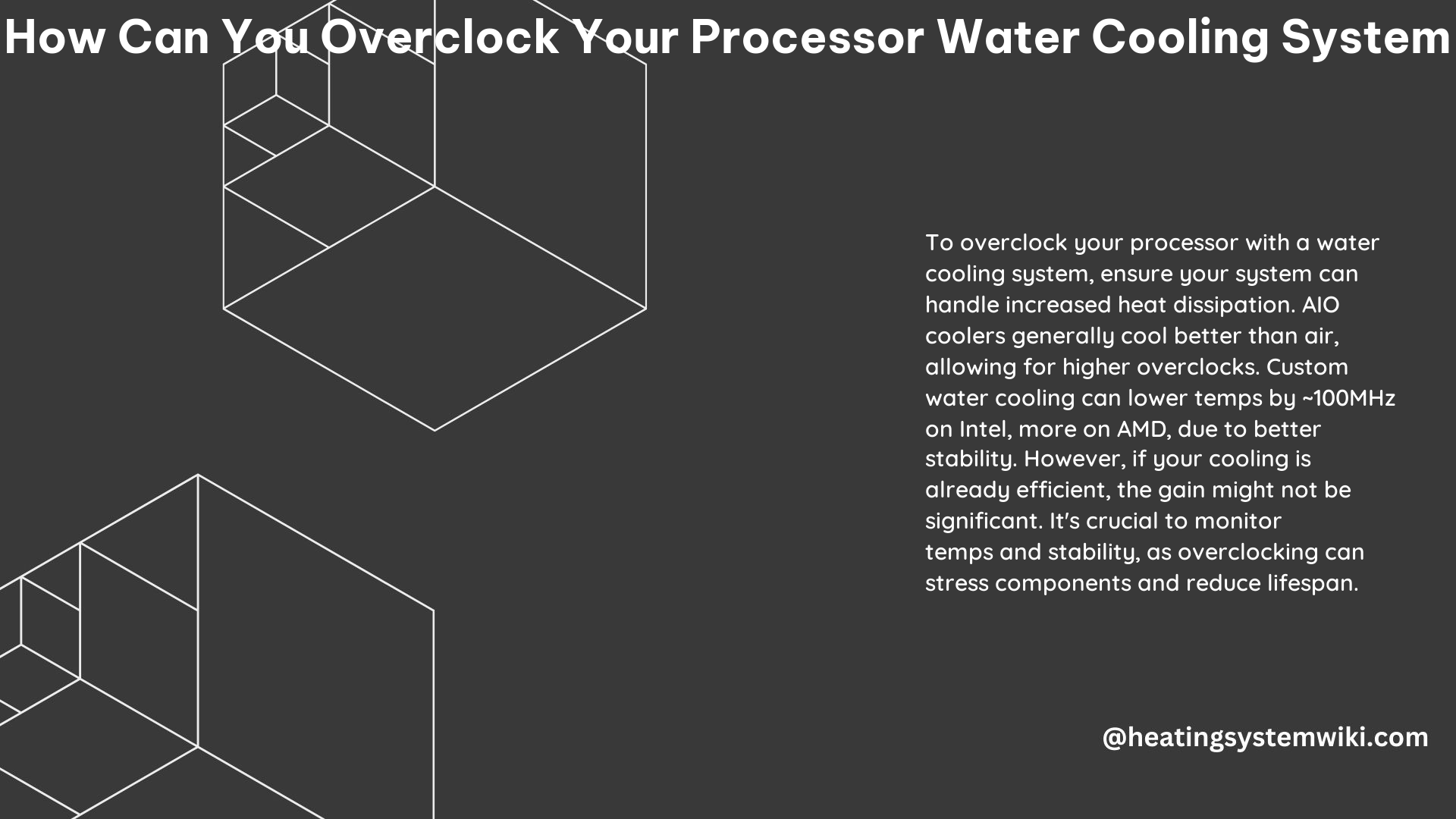Overclocking your processor can be an exciting way to squeeze more performance out of your computer, but it’s crucial to ensure that your cooling system is up to the task. While air cooling can be sufficient for moderate overclocks, custom water cooling can provide better temperature stability and higher overclocks, allowing you to push your CPU to its limits.
Understanding Water Cooling Types
When it comes to water cooling, there are two main types: all-in-one (AIO) coolers and custom loops.
All-in-One (AIO) Coolers
AIO coolers are pre-assembled and sealed, making them easy to install but less customizable. These coolers typically consist of a water block, a radiator, a pump, and a fan, all integrated into a single unit. AIO coolers are a popular choice for those who want the benefits of water cooling without the complexity of a custom loop.
Custom Loops
Custom loops, on the other hand, allow for more flexibility and better performance but require more knowledge and effort to set up. With a custom loop, you can choose the individual components, such as the water block, radiator, pump, and reservoir, and tailor them to your specific needs. This level of customization can provide better cooling performance and higher overclocking potential.
Advantages of Custom Water Cooling

Custom water cooling can provide a significant temperature improvement, which can translate to higher overclocks. For example, a user in a Reddit thread reported a temperature decrease of 20°C after switching to custom water cooling, which allowed them to push their CPU to higher clock speeds. However, the exact improvement will depend on various factors, such as the specific components and the quality of the water cooling loop.
Steps to Overclock with Water Cooling
To overclock your processor with water cooling, follow these steps:
- Research your CPU and Motherboard
- Understand the overclocking potential and limitations of your specific CPU and motherboard model.
-
Consult manufacturer documentation, online forums, and reviews to gather information on the optimal overclocking settings for your hardware.
-
Prepare Your Water Cooling Loop
- If you’re using a custom loop, ensure that all the components are properly installed, including the water block, radiator, pump, and reservoir.
- Fill the loop with a suitable coolant and bleed the system to remove any air bubbles.
-
Test the loop for leaks and ensure that the pump is functioning correctly.
-
Enter the BIOS
- Restart your computer and enter the BIOS (Basic Input/Output System) menu.
-
Locate the overclocking settings, which may be labeled as “OC,” “Overclock,” or something similar.
-
Adjust Clock Speed and Voltage
- Increase the CPU clock speed in small increments, such as 50 or 100 MHz.
- After each increase, run a stress test (e.g., Prime95, AIDA64, or Intel Extreme Tuning Utility) to ensure system stability.
- Monitor the CPU temperature during the stress test to ensure it doesn’t exceed safe limits.
-
You may also need to adjust the CPU voltage to achieve stability at higher clock speeds.
-
Test for Stability
- Once you’ve reached the desired clock speed, run a comprehensive stress test for an extended period, such as several hours.
-
Monitor the CPU temperature throughout the test to ensure it remains within safe limits.
-
Fine-tune
- If you encounter instability or high temperatures, you may need to adjust the clock speed or voltage further.
- You can also consider improving the water cooling loop, such as adding a larger radiator or upgrading the pump.
Remember, overclocking can potentially damage your components and void your warranty, so proceed with caution. Always monitor your component temperatures and ensure they stay within safe limits.
Conclusion
In summary, water cooling can provide better temperature stability and higher overclocks than air cooling. Custom loops offer more flexibility and performance than AIO coolers but require more knowledge and effort to set up. By following the steps outlined in this guide, you can overclock your processor with a water cooling system and unlock its full potential.
